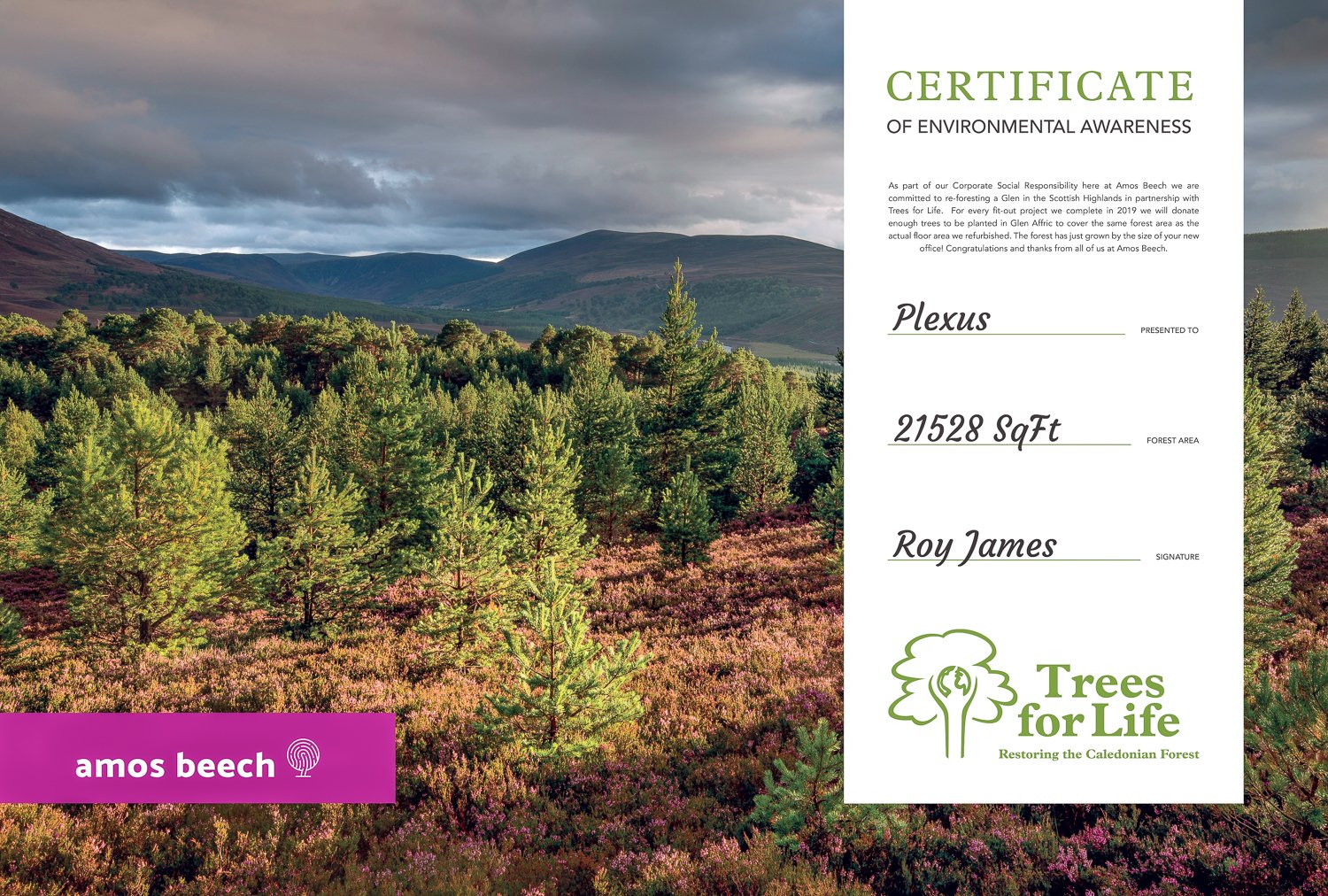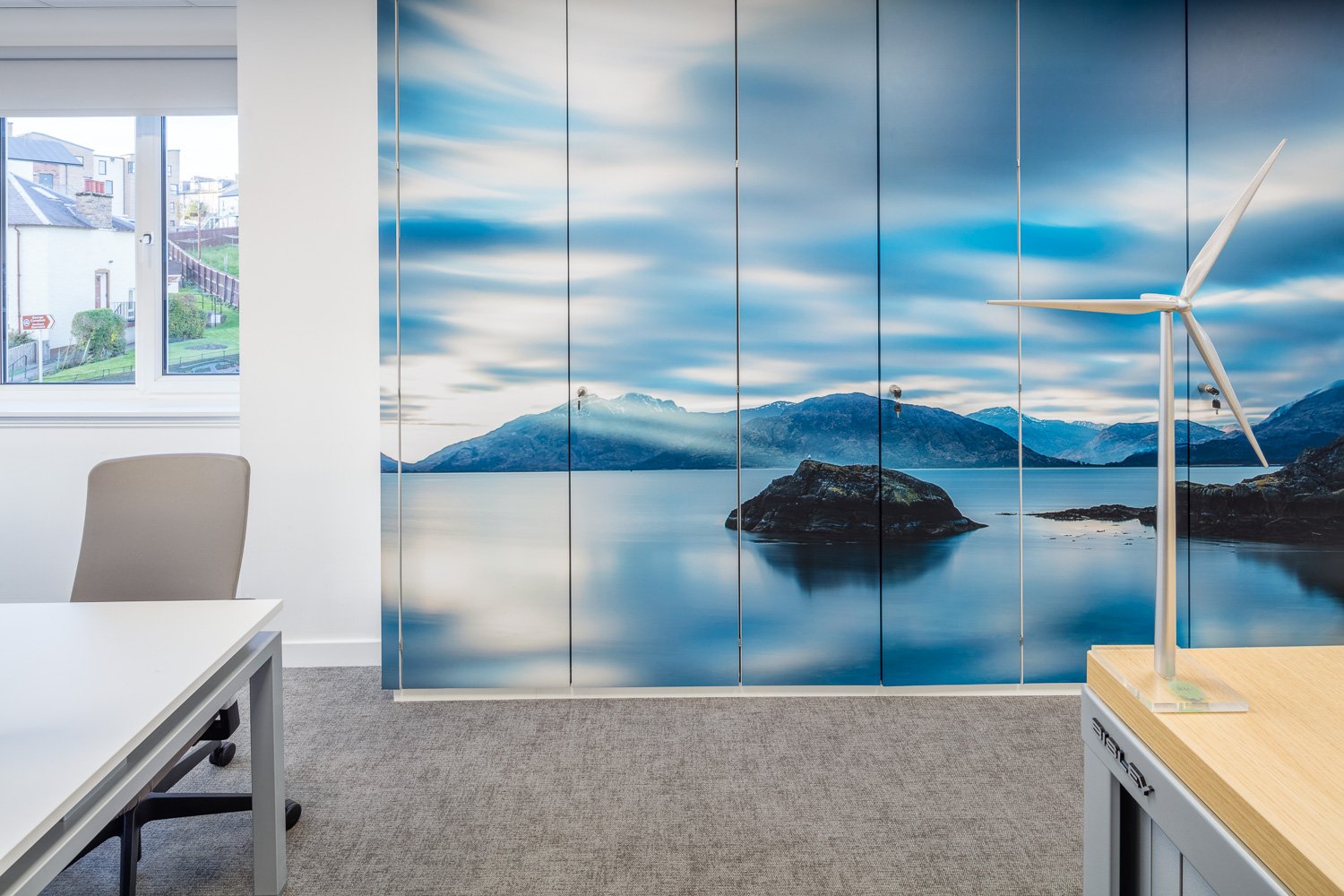Hybrid Working: What Is it and Why Are Employees Demanding it?
Prior to March 2020, we had two major types of companies: office-first and remote-first. The first category expected employees to work from the office for most of the time, while the second type expected them to work anywhere else for most of the time. Today, things aren’t black and white anymore and concepts like hybrid working seem to be here to stay.
If you’re a regular on the Amos Beech blog, you know that we’ve already covered agile working or flexible working in the past. Back then, these concepts seemed a bit trendy, if not revolutionary per se. While the number of companies that allowed their employees to work away from the office for at least some time was increasing, no one could have foreseen the hyper-growth in remote working that the pandemic spurred.
After more than a year since the pandemic sent us all working from home, it seems that there is no consensus about the best alternative – remote or non-remote. So we have something that makes everyone happy: hybrid working.
Let’s discover what this (relatively) new kid on the block is and what to expect from it.
But first, a primer on how the past year has influenced our views on working outside of the office.
Back to the Office: Yay or Nay?
In a recent survey, more than 57% of respondents stated that they would like to continue to work from home when the pandemic is over. It looks like their wish may be granted: before the crisis, a mere 15% of employers said that more than half their workforce worked from home regularly. After the crisis, 40% of employers said they expect more than half their workforce to work regularly from home.
Companies pivoted to the new working conditions incredibly fast: 87% of employees report that their companies have adapted to hybrid working. The same report has uncovered more interesting facts:
65% of employees say that their employers have provided them with everything they need to work from home.
More than half of the surveyed employees say that they have been able to use their lunch break for personal reasons and that they have an improvement in their happiness levels since working from home.
However, 30% of employees feel that they are working more hours since transitioning to working from home, while 53% of them feel pressured to be available at all times.
Consequently, more than a third of the employees surveyed opted for mental health and resilience resources when they had to choose between various training and learning opportunities.
Unsurprisingly, socialising is what most respondents (65%) miss about working in an office.
There is obviously no one-size-fits-all here. And you can easily depict that from the most popular media titles on this topic:
But on the other hand you’ve got:
What do you do when there’s no consensus one way or the other?
You go hybrid, of course.
What Is Hybrid Working?
Hybrid working is a model that offers employees flexibility and where and when they work. It enables them to work from the office, from home, or from any location – even locations outside of the city or the country where the employer’s offices are.
There are not set parametres for hybrid working. Here are some options on how to adapt this working style to your needs:
Work from the office full-time in some days and remotely in others.
Have some departments come in to the office every day, while others work 100% remotely.
All employees can work from the office for part of the week and remotely for the other part. You can rotate which departments work remotely Mondays through Wednesdays, for instance, or you can call them all in at the same time.
Have all your employees work remotely, save for one day a week or a month when they come into the office for an all-hands meeting.
Make it entirely the employees’ choice. You can still have an office where people can choose to come in whenever they want to. Solutions like iOt Space can help them find free desks or conference room, schedule activities, and make the transition easier altogether.
In hybrid working, the world is your oyster. You can choose any of the options above or create your own variation by combining two or more.
One of the main selling points of hybrid working refers to the fact that it can be future-proof. The COVID-19 pandemic has taught us that a lot of companies in a lot of industries can survive and even thrive with a 100% remote workforce, even when the transition to remote working was done hastily and with little time for preparations.
People adapted, pivoted, managed. Now that we’ve had more than a year to perfect our systems and our routines, things can get even better.
Plus, with the world gradually re-opening, workers aren’t confined within the same four walls of their home. They can work from their favorite café, from a nearby park, or, why not, from an island in the Mediterranean.
If everything can be set just as you want it to, what’s stopping some companies from embracing hybrid working without reserves? And why isn’t everyone in the workforce flocking to this model?
Let’s find out!
One of the latest studies:
Pros and Cons of Hybrid Working
These are some of the things that hybrid working can undoubtedly bring to the table:
No more time and money wasted on commuting: this is a big plus! The average worker in the UK used to spend 1 hour 38 minutes on commuting alone, not to mention the time it takes to get ready to leave and then to decompress once you get home. This time can be spent with your family, on your hobbies, or, why not, on getting up later and then being more productive throughout the day because you got to sleep in.
Better for the environment: during the lockdowns, the carbon emissions dropped so much that we almost met the conditions of the Paris agreement. If fewer people would rush to work every day at the same time, we could make a dent in the environmental disaster that most scientists are warning us about.
Less money spent on office lunches: it’s undoubtedly more affordable to eat at home. Plus, you have access to healthier options and, given the point above, more time to go shopping for those healthier alternatives.
Better office spaces: at Amos Beech, we’ve been working on a lot of fit out and refurbishment projects in the past year. We’ve seen Scottish companies pivot from crammed office spaces with rows of impersonal desks to more homely designs, with collaborative spaces, lounge chairs, outdoor spaces, and more indoor plants. All in all, the employees get a more homely feeling when they are in office and they get to be more productive in a space that’s more “humanized”.
Less money spent on corporate real estate: when you make the shift to hybrid working, you don’t need to cram all your workforce in the same space at the same time every day. So you can rent a smaller space and use the rest of your rent on refurbishing, moving to a better office building, or simply investing in your company’s growth.
Less employee turnover: with more than half of the workforce demanding hybrid working, you can be sure that your employees will switch companies if you don’t offer them this option. 47% of employees are ready to take this step when not offered hybrid working options. If, on the other hand, you do offer it, they will stay loyal to you.
Reduce exposure to illness: we all expect the pandemic to pass…eventually. But this doesn’t mean that office spaces can’t expose you to other airborne viruses. Remember the classic flu? It might be back with a vengeance!
Hire talent from across the globe…or, at least, the country. If physical presence in the office is no longer a pre-requisite, you’ll have access to a much larger talent pool.
What’s stopping employees and employers from fully embracing hybrid working then? Well, a few things:
Less socialising: Aristotle said man is a zoon politikon – a social animal. We need social interaction to thrive and to be productive. The occasional water cooler meeting of a co-worker typically provides us with unexpected creative bursts that can last throughout the day. When we no longer have that, we miss it so much that our mental health is impacted. Granted, if we are able to leave our home, we could interact with other workers we meet in cafes, but it could still take some adjustment.
Management challenges: it’s hard for managers to keep their teams motivated. Due to our ‘social animal’ quality, an in-person praise from a manager always weighs more than the same praise delivered via email. Another hurdle for managers is building effective teams when their members have yet to meet in person.
Discrimination: within certain companies, some departments (the creative ones, usually) can easily work remotely, since all they need is a laptop. But what happens to the departments that need constant access to bulky hardware and that need that hardware to be shared between team members? QA teams are good example here. They could feel discriminated against, which prompts most managers to forego adopting hybrid work altogether.
Motivation and productivity are harder to come by: the moment you step into the office, your mind knows that you are there to work. That’s what everyone does around you. Of course, there are countless distractions and ways to procrastinate in a classic office, too. But there aren’t nearly as many as you can find at home. Netflix and chill instead of Zoom and Excel? Who could say no to that? Very few people! However, even self-discipline and motivation can be learned, so there is still hope there.
Flexible Working, Agile Working, Hybrid Working – What’s the Difference?
Tired of all the new working styles popping up every year? So are we! It’s sometimes hard to keep track. But, if we’re being honest, the workplace has been changing forever. It’s just easier to notice now.
While flexible working, agile working, and hybrid working have a lot of things in common, it’s the subtle differences that matter.
Flexible working is the oldest of these terms. It usually refers to when an employee is supposed to work. Flexible working arrangements are discussed with the employer beforehand and can refer to part time working, working in shifts, not starting the work day at the usual hour to accommodate students or other social categories, and so on.
Initially, this term was coined for the “traditional” working style, where everyone came to the office. Now, it can be used as complementary to either agile or hybrid working and it can refer to working from home too.
Agile working is a style that borrows from the Agile methodology typically used in project management to offer a new way of working that focuses on deliverables rather than time spent on a certain task or in the office.
Agile working offers employees the possibility to choose where they work from and when they do it, with little or no constraints, as long as the job gets done. Usually, companies that implement agile working will also rely on technology to make the transition seamless. Hot desking (where not every employee has an assigned desk because they aren’t always in the office) is a complementary trend to agile working and one that can be implemented easily with the right technology.
Hybrid working is the lovechild of the two styles above and one of the few good things to come out of the pandemic. There are no set rules in hybrid working and no methodologies you have to adhere to. As something born out of the initial chaos of the pandemic, hybrid working is 100% flexible and adaptable to the needs of every company.
As outlined above, you can choose how you mix and match the countless options for remote and in-office work and how you couple them with flexible hours.
Wrapping Things Up
The beauty of hybrid work is that it appeals to the generations that make up most of the workforce now and in the future: Millennials and Generation Z. Both of them avoid routine as much as possible and cherish freedom above anything else.
Ready to pivot to hybrid working? We can help you create the ideal space for a hybrid working approach. Check out our office fit out service and reach out to our experts!
Biophilia within the workplace
The resurgence of the theory of biophilia and, more recently, biophilic design is more relevant than ever. We, as humans, have a deep-rooted attraction towards nature; and only in the last century has it become possible for people on mass to trap themselves in concrete jungles. One location, in particular, that has associations of estranging humans away from nature is the workplace. Consequently, within the commercial workplace setting, we are now experiencing a catalyst of hazy borders between the outdoors and indoors.
Biophilia within the workplace
Bringing the outdoors indoor isn’t a new development; the Chinese have been growing plants indoors as a symbol of wealth from as early as 1,000 B.C. Even in the UK during the Victorian Era the creation of glasshouse, due to the industrial revolution, allowed explorers to flourish exotic plants that they brought back home from their travels. However glasshouses were only obtainable for the social elite, for most householders biophilia was achieved through wallpapers that portrayed botany inspired patterns. These wallpapers became the most important element to interior decoration in a residential setting at that time.
These hazy borders between the outdoor and indoor have a distinct correlation with the borders between residential and commercial environments. This highlights the loss of singularisation of spaces in our contemporary society, instead with the domination of use value to embrace a fluid approach. Subsequently, as we nomadically roam, there is a constant yearning to feel connected to the surrounding landscapes, as it will support our fluid experiences, ensuring that a constant feeling of comfort is maintained.
A situational value is put on the consumption of space, with transitional spaces adding emphasis to the flexibility. It has been said that being geographically mobile will be a defining feature of the new elite; workplaces interiors will surpass the norm of commercialism through the deconstruction of convention, to allow the surrounding environment to envelop a lifestyle that is sprinkled with essences of home and the outdoors. This design approach highly values environmental empowerment that is directly linked to psychological comfort.
Biophilic design
The most direct experience of nature in a built environment would be to have vegetation and flowering plants in the workplace. A study at Cardiff University stated the placement of living plants in a workplace setting improved productivity by 15%. The presence of plants is also known to reduce stress, enrich physical health and improve comfort. Additionally, the notion of comfort has many indirect experiences with nature to achieve biophilia, such as simulating natural light and air; they must be appropriate to each setting to help ensure functional wellbeing at work. By balancing environmental demands with skills and abilities, of employees on how they use their workplace, will create the optimal environment for creativity and flow.
To visually portray nature would be to simulate and construct out from the natural patina of materials such as leather, stone, copper, bronze and wood; that provokes positive visual and tactile responses. The choice of materiality, colours, naturalistic shapes and forms must be carefully considered to achieve biophilia and enable the fluidity within the lifestyles and movements of the modern man. For instance, an interior that appears light and airy may have translucent facades that open up for ventilation and movement, consenting to visual internal transparency. This dematerialisation projects to employees a focus on accessibility rather than ownership and possession.
As more workplaces are adopting agile working and open office configuration, it can be translated to creating internal transparencies across once traditional organisation to drive collaboration, integration and foster a sense of belonging. This is appropriation of an experience of space and places namely, mobility and way finding, as employee’s comfort and wellbeing is dependent on free movement. It can be achieved with stairs and ramps carefully integrated with platforms, seating and plans, allowing employees to flow through effortlessly.
Prevalently, in more recent times there has been a shift of attention to sustainability and the environment. There has been more demands for products to be sustainable, many manufactures have been developing different techniques to up-cycle materials. Biophilic design must have ethical value that cares for the sustainability of nature and must commit to maintaining a healthy relationship.
Biophilic design, within the workplace, is about creating wholesome habitats for employees, those that are istigkeit to natural forces. The istigkeit of biophilia isn’t superficial; it has many tangible layers and levels to evoke similar feelings one gains from the earth. Especially as management style are moving away from autocratic, towards an inclusive and collective approach. It is evident that this design methodology has enriched workplaces to increase productivity and boost overall moral; by incorporating biophilia in to a design scheme is less seen as a luxury and more of a commodity to improve employee wellbeing.
Text and images: Design Team
Publication date: August 22, 2017
Business Disruption – Moving or Refurbishing Offices is every MD’s nightmare
Note: this blog was written way before the pandemic, but probably even more actual today!
Should I Move or Refurbish My Current Office?
Tough question, right?
Moving to a new office entails a lot of stress. You need to find the right real estate agency to help you find the right property. Then you need to negotiate and decorate. Plus, should you keep some or all of your existing furniture? Should you buy everything new?
Refurbishing isn’t that easy, either. The main challenge is that you have to keep operations going, stay productive and minimise business disruption. All this while you also supervise a project that can take weeks or months.
Can you really find out what’s the best alternative on your own? Can you factor in all the business hours lost in both cases, along with the investment? And, more importantly, how do you know for sure that you’ve outgrown your current office space?
At Amos Beech, we have consulted dozens of companies that were ready to spend a lot because they thought they needed a bigger space. Our research and expertise revealed that all they needed was to get more out of their current one.
Yes, a skilled team of designers and office refurbishing experts can help you save a lot on office real estate by ‘simply’ re-arranging the furniture in your office.
But that’s not always the case. Sometimes you really need to move. The same team of expert designers and contractors can help you turn your new office into a space that every single employee loves.
A blog by Roy James:
Moving a business is not easy, there are so many things to think about, so much to do, along with minimising the disruption to your organisation, so its little wonder that moving or refurbishing offices is often low on the agenda until the last minute. That brings about its pressures as you realise too late that you may have to make a rushed decision.
Moving or refurbishing offices?
Refurbishing an existing office is almost harder. Although there is less to arrange, in one sense, there is the added complication of trying to maintain the services and revenue of your company yet expect it to bear with the disruption which potentially can run from weeks to months.
Edinburgh Park, Scotland’s premier business park
Even when you have made the decision of whether to move or refurbish, where do you start? Where did that decision come from? Was it rushed or an informed, logical decision based on robust consideration and challenged against the strategic growth plans of the company?
This is clearly outside your comfort zone. You want the best for your company – minimal disruption and continuity for your customer but along with it you need to deliver on company goals and maintain value to shareholders.
Let’s explore this scenario. Your lease is up for renewal - you obviously have two options - do you stay or do you move? And, as we all know, there are pros and cons to moving or refurbishing offices. The question is, how can I make an informed decision?
One way to do it
Who should you ask? Or is it my decision? Should I know what to do?
Yes, there are consultants out there that would advise and give well informed advice but it doesn’t end there. They are often from a big, even global company and before you know it you are in the maze of consultancy that is both expensive and protracted as you engage with just about every consultant under the sun.
Maxim Office Park Lanarkshire, between Glasgow and Edinburgh designed by Glasgow architect Keppie Design
Don’t get me wrong, you will end up with first class advice but I have two arguments - it will be both expensive, and quite frankly, take months which as I started with, it is time you often don’t have.
But is there really another way?
Actually, there is, it’s based on trust and comes from a sector of the market you least expect.
Before I start, though, let’s talk about trust as it’s one of the most valuable and effective attributes in business. In scenarios such as this it’s pretty crucial. For this to work we need to engage with someone who is wanting to help you and trust is a two-way street.
This sector is quite unique, often labelled as office furniture suppliers or fit out companies but actually quite different.
And, yes, just like any other company, they are looking to create revenue and grow profits but you are talking to the right person one time here!
Okay, that sounds hackneyed and I apologise but it’s true, just please let me explain.
So, let’s briefly (if I can) expand this scenario out a little further.
Your lease is expiring and you need to make a decision on what to do. You realise this is not a decision you can make without being informed so you go to a reputable consultancy firm or architect practice in Glasgow or Edinburgh who, for a fee, help you evaluate the space you have, the growth plans of the company, the vision and strategic plan and come back with a suggestion of what they feel is what you need to do. But that’s it, they suggest for you to move, they have suggested how much space you need to achieve your growth plans and now… now what?
From here you are often now on a journey with this consultancy as they offer to find you space. They even offer to manage the whole project for you (what a relief!) and go down a merry passage of contracting interior designers, electrical engineers, mechanical and ventilation consultants, quantity surveyors and project managers as they create the perfect solution for you (oh and they take a cut of everything that happens).
Moving or refurbishing offices, is there another way?
But there’s just a few points they missed.
You are now pretty alienated from the process; all these consultants are designing something that they want to be proud of (and rightly so) but that tends to drift away from any budget you may have had. You end up with a Rolls Royce design and, although you have fallen in love with it, you just can’t really justify the expenditure, and more than this to get this far the process has cost you a lot of money!
So here you are with a project over-budget, with a re-look only going to cost more money and time and this is the point that if you hadn’t already been disillusioned by this whole process you are now.
I could go on. Say you even get on site, you have a consultancy pulling together different trades to realise the project, they have ever so cleverly gone to tender to get you the `best price’ but the disconnection carries on site. The electricians fit the floor boxes, the furniture company fit the desking, and, lo and behold, they weren’t communicating with each other during the final design and half of it doesn’t match up creating more delays and potential cost.
The other way
As I said, it’s a different approach and it’s a single, unified one to all of the above. These companies come in and work with CEO’s and MD’s to evaluate the needs of the business. They have no ulterior motive as to whether you move or stay, they aren’t looking for a cut on any third party consultancy, they just have a great understanding of what is important to business.
So you go through the same process of answering the questions about moving or refurbishing offices, but in a completely different way. Yes you will need to engage with a property agent to find a property but you are looking for one based on a decision made by someone who has no interest in property letting. Going on from that they are not just trying to provide a solution, they are working to a budget, have in-house capabilities that do not require expensive third party input and, most importantly, are keeping you engaged and close to the decision whilst co-ordinating all the different phases of the project.
Maxim Office Park Glasgow, state of the art architectural design
On site, being the client, connection is much closer, things happen so much quicker, changes you may need to make don’t need to through a long process, (and believe me it is long) it goes direct, costs a lot less and contractors are working to a common goal rather than just focusing on their own scope of works.
So where is the catch?
There is none, but as I said it’s based on trust. These companies invest a lot of time up-front helping companies make informed decisions and often it’s not until a lease is signed, when they have done months of work, that they get a return. For them it’s a worthwhile investment, for the client it is good value as they get what they need, when they need, with direct input whenever they like and a partner that is only interested in delivering something fit for purpose.
The hard bit is when corporate say `we need to go to tender’ as often they say that at the point when these companies have invested heavily in the project, especially as they don’t say that when they are using a paid consultancy as they know they are getting competitive comparative quotes from them . It feels good value but all you are actually getting is a protracted, expensive solution that can be scarily detached from the original CEO’s vision. Please everyone let us understand and embrace the speed of trust.
I know blogs are meant to be informative, unbiased (not long – please forgive me) and not `selling’ but sorry, I can’t say all this and not tell you where to go, I’m too obsessed, too passionate and believe in ourselves to this extent (and I’m only writing this as it was an in-house competition) but you need to talk to Amos Beech.
Contact me or one of my colleagues via:
This was a blog by Roy James
Amos Beech ran an internal blog competition. The above article, written by Roy James, won the category for being ‘website worthy’. Roy was the Operations Director at the time (see video below) and he is known for being a man of few words. Consequentially, we were all very impressed with his 1300 word blog! He has made his point very well.
Date of first publication: December 8th, 2018
For more info about some of the fit out and refurbishment projects that we have done click on the button below:







































